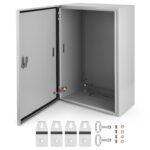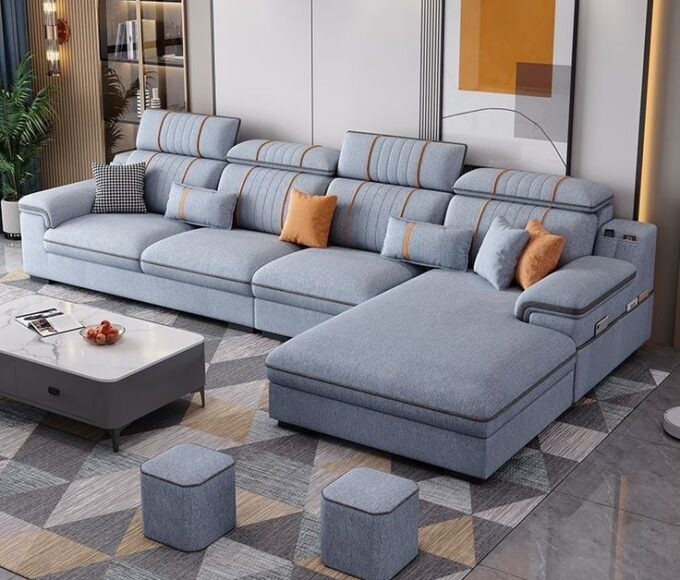Have you ever dreamed of sleeping in a comfortable room that is all yours, simple and environmentally friendly? Tiny houses are not only a trend, but also a life style that has been adopted by many people who cannot stand the clutter in the conventional living. Regardless of whether you are a fan of minimalism or just wish to spend less, tiny homes are a brand new solution to the problems of the modern reality.
However, it would be prudent to first of all have an idea of the costs before plunging into this glamorous affair. Depending on many factors, the price may swing between design details up to the delivery logistics. What do you do to navigate these waters? We are going to delve into the factors that affect the prices of tiny homes and how you can make sound decisions on your way to the tiny home happiness.
What is a Tiny Home?
A modest house is a single-family housing, which is usually less than 400 square feet. These areas are constructed in such a way that they maximize efficiency and reduce wastage and at the same time offer comfort.
The tiny houses are available in different designs, which include smooth modern houses and the rustic cabins. They are usually characterized by the use of novel designs incorporating multifunctional pieces of furniture and ingenious storage design. It makes the best out of any inch it has.
A significant part of the population opt in favor of tiny living as a means of earning money. Reduced mortgage payment, utility payment and minimal maintenance may also make a significant difference on ones budget in the long run.
Other than the economic benefits, small houses encourage a less complex life. The materialistic nature is no longer emphasized but rather the experiences and the connection with the loved ones.
Such homes also promote sustainable lifestyles through minimization of energy use and minimal land use. Tiny homes have become an attractive choice among those who are willing to change their lives since more people are opting to live eco-friendlier lives.
Factors that Affect Tiny Home Pricing
Location is critical in terms of tiny homes cost for australians. The markets of real estates are diverse. The cost of land in urban areas is also usually very high compared to rural areas.
The price is also greatly influenced by materials which are used in construction. Sustainable materials will be relatively costly but have long-term advantages. The use of conventional building techniques can have impact on total costs as well.
Another factor is the complexity of design. Individual design or special layout makes it expensive as opposed to simple models.
The prices of labor vary depending on the part of the world and experience of the builder as well. Money on quality Hire experienced craftsmen and your budget will go up.
Some levels of regulatory fees such as permits and zoning laws may come as unwelcome expenses, particularly in some municipalities where tiny homes are not widely prevalent.
Such factors as high-end finishes or power-saving outfits may increment the ultimate price of your small home significantly.
The Cost of Building a Tiny Home vs Buying a Pre-Made One
The process of creating a small house can be an adventurous one. You can customize each and every aspect, including the layout and materials that were used. Nevertheless, this freedom has its costs associated with it.
The average cost to build a small household is between 20, 000 and 100,000 dollars based on the size and amenities. The do it yourselfers will also save money because they will do the majority of the work themselves but will need to take into account their time and effort.
A pre-built tiny home is convenient to purchase. Prices on these homes generally begin at approximately $30,000 and may go higher up to about 150,000 in case of luxury. The advantage is that you can access it instantaneously; you will not have to wait months and even years before it is constructed.
The decision will be determined by the individual preferences such as the flexibility of budget and the level of interest that you may wish to contribute in the construction. All the options possess distinct benefits that suit the various lifestyles and objectives.
How to Save Money While Building or Buying a Tiny Home
Construction or purchasing a small house may prove costly, yet it is possible to reduce the expenses. Begin with research of local building codes and permits. It would be better to know the regulations in advance and avoid expenses in the future by paying a fine.
Look at buying materials in large quantities or when they are on sale. Discounts in the stores are seasonal and may be a huge variation in your budget.
Alternatively, it is possible to look at reclaimed or second-hand materials. Salvaged wood, windows and fixtures are also cost effective and also contribute to character to your home.
Provided you are a man of hand, was well, work some of it yourself. DIY activities can save a lot of money paid to labor whether it is painting or landscaping.
Don’t be in a hurry about location. The land prices are very diverse depending on the demand and the distance to the facilities, the proper choice may make a lot of savings in the long term.
Hidden Costs to Consider When Budgeting for a Tiny Home
When planning a tiny home, it is essential to go past the starting price. There are unpleasant surprises that can creep in and affect your financial plans.
To begin with, there is land costs. The cost of buying or leasing land is highly differing depending on the area. Zoning regulations may also restrict your location of where to park your tiny home, and may impose extra costs.
It is that utilities might take you by surprise as well. The installation of water and electricity can also be a costly affair, and it can be expensive to obtain special permissions or links.
Don’t forget insurance! The special needs of tiny homes unlike the traditional houses are usually different. This may result into increased premiums than anticipated.
You should also include maintenance in your calculations. Periodic maintenance is needed to ensure longer durability yet not given due consideration in the planning process.
Storage solutions should not be underestimated in the case of downsizing a bigger place. Expenses in this case can be accumulated very fast thereby influencing your financial plan.
How to Determine if a Tiny Home is Right for You
Consider the way of life before you plunge into small living. Will you be willing to become simple? Reduction may be freeing and difficult.
Look at how you live your life. Do you believe in flexibility and mobility? Tiny houses are becoming a freedom to move without any heavy mortgage.
Assess your possessions, as well. Are you able to rid yourself of superfluous things? Minimalism, which is promoted by a small house, is not something everyone likes.
Consider community also. Most small home enthusiasts are successful in small settings or tightly-knit parks, where communal resources are prevalent.
Assess future plans. Would this way of life be long-term? Though it is expanding a family or newer adventures, imagine how a small space will be fitting in those visions and then make any decisions.
Is the Price Worth it for the Benefits of Living in a Tiny Home?
Downsizing to living in a small house is not only about downsizing but a way of life and has its own advantages and difficulties. There is a wide range of price tags that are linked to tiny homes and depend on a number of factors including location, materials, and design options. To others, the cost efficiency of mini living could supersede the increment during the initial investment in custom-built or quality materials.
Most people consider it a good trade when weighed against the likely saving on utilities, maintenance and even mortgage payments (or non-payment). Small houses can offer a higher degree of financial liberation as well as encourage minimalism and sustainability.
It is however necessary to look at all the latent costs that might creep in during construction or purchase process- such costs as permits, land preparation costs and utility connections may run away. Also, it is very important that this lifestyle should be suitable to your personal needs before plunging into the construction or buying one.
The decision to invest in a tiny home is or is not based on whether or not the house matches your priorities: Are you in search of simplicity? Delighted to reduce your environmental impact? Or be it to get a bit of money-on-the-side? The path that each individual chooses will have a different face depending on what he or she values most in their lives in regard to place of living. These considerations versus price will be used to decide whether taking the leap into the tiny home world is something that fits into your life objectives.












Leave a comment